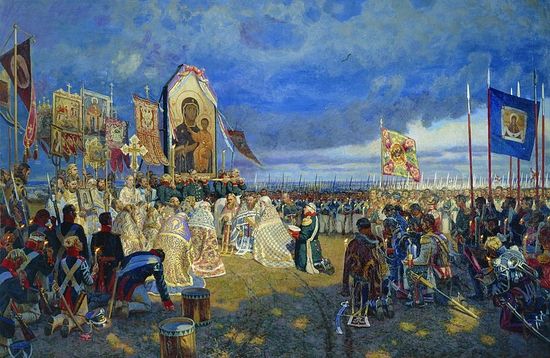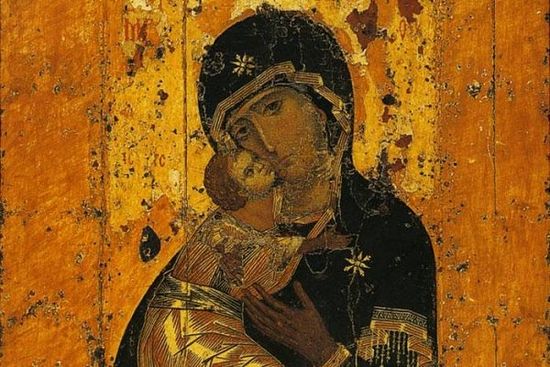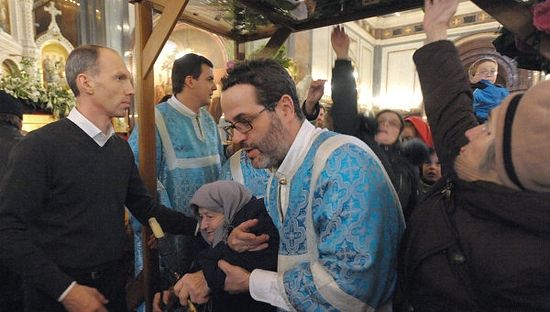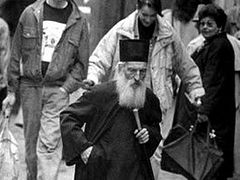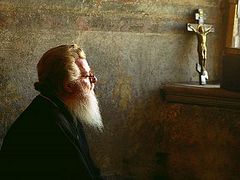In Orthodox circles, some want to venerate wonderworking icons without fail, to visit “the holiest places”, to bring earth from the grave of one or another saint, to dry up and keep prosphora given them by a priest at home and so on. Do these practices bring us closer to paganism or are they indicative of our reverence for divine things? Why so some prefer icons of a certain tradition, while for others it does not matter which icon they venerate? How and why should we familiarize ourselves with church art? We will talk about all these subjects with Oleg Viktorovich Starodubtsev, teacher of the Sretensky Theological Seminary and associate professor of the Moscow Theological Academy.
—Oleg Viktorovich, should we prayer before paper icons, or icons painted on wood? What is the difference?
—The Bible reads: According to your faith be it unto you (Mat 9:29). Miracle-working icons are granted to us by the Lord because of our lack of faith, in order to strengthen our faith. That is why we can pray with faith before absolutely any icon. After all, in prayer we address neither a board, nor paper, nor a fresco, nor a mosaic—our prayers are addressed to the prototype depicted on the icon. We can pray sincerely and with all our heart without icons as well. An icon is a manifestation of one’s inward, spiritual state. That is why a modern man can say: I like a seventeenth-century icon more than a twelfth-century icon. We apprehend the things which are closer to our heart. But nowadays everything is mixed up—sometimes our people are more interested in the style than in the icon itself and value icons for their price. They may say, “This is an expensive icon—I need it for my Church wedding!” or, “This is an icon by such-and-such an artist!” and so on. When people seek for a certain style or era, I don’t think it is a good idea, and this approach tells nothing about the depth of our spiritual world. We need to understand the inner meaning of an icon—this is how it should be treated, even if it is a paper icon. We know that paper icons can also stream myrrh.
—Many believers aspire to have dried bread blessed on a saint’s relics, saints’ personal items or some earth taken from the grave of one or another saint. How should we regard these phenomena?
—Such practices came here from Europe. It was there that such objects in memory of one or another shrine first appeared in the eighteenth and nineteenth centuries as a result of secularization of the society. These were small items: phials, charms and so forth. Little by little we adopted this tradition as well. But we should not forget that our ancestors as early as the twelfth and thirteenth centuries used to bring blessed earth from their pilgrimages to holy sites. This practice always existed. For example, people brought earth from Jerusalem so as to lay it on their graves, and such graves were considered to be the most “prestigious”… As for modern life, I personally do not accept any small items of this kind as gifts, whether it be icons with calendars, key rings from the Holy Land and so on. I cannot accept things which will be unnecessary for me. This is because in the end these items fill our personal space and are no longer perceived as “relics” by us. Let us have only two or three icons in our homes such as those reminding us of our ancestors, our grandparents. So let them be few. An Orthodox Christian should not have a whole heap of dried prosphora, dried bread, stones etc. Maybe these things are good for a certain stage of your spiritual formation. But if a person does not stop, if he keeps collecting all these small objects for a long time thinking that they are his tradition and a part of the Orthodox culture, then, in my view, this is a wrong path, a path to something like paganism.
—And what do you think of virtual icons? For example, today many users display Orthodox icons instead of their own photos on their pages in social networks. Is this also a kind of reverence? After all, the internet is a place where there are many negative and even blasphemous things…
—Representatives of my generation were very happy in our young days—we had neither cell phones nor the internet! We read books, communicated “face-to-face”, wrote each other letters and so forth. Curiously enough, nothing has changed for me, though I do use the internet, a cell phone and other innovations. I want to say that the virtual world, this virtual “reality” deceives all of us. In fact it artificially creates a sensory experience so we perceive a picture as if it were brighter than the world around us. And when we get absorbed into this virtual world, we begin to believe that all our life is there. We begin to correspond and exchange messages with each other there incessantly… I even heard of such a thing as “confession online”! Now all we will have to do is to bow before this idol! I doubt that one can gain Divine grace by listening to the prayer rule online. We want to know all the latest Church news, and so we peruse our Orthodox websites, including the website of the patriarchate. But that should not take the place of our real spiritual, church life. The internet offers us some sort of an illusion of freedom, since I can open any webpage, find any information and write to any person. Crazy we are!.. I am by no means trying to make you or our readers return to the Stone Age. Yes, we should be well-informed about the latest developments, but the internet should not reign over our hearts and minds.
—Among Orthodox Christians there is a widespread byword: “A place filled with the grace of God”. They may say: “This place is very holy”, “And that place is more abundant in the grace of God.”
—This term is correct. It is indicative of our weak faith. God is omnipresent, but because of our disbelief He performs miracles and grants us wonderworking icons. That is why it seems to us that Blessed Matrona of Moscow will answer our prayers only at the Protection Convent in Moscow and will not hear us in some other place. On the other hand, when a person makes a journey to a monastery/convent, to holy relics, to miracle-working icons as a journey of faith, then it will bear fruit. One foreigner who once was present at our Orthodox service said, “Now I understand Russians! You stand at your services, and so you stand up for your faith with your legs!” So pilgrimages to holy sites, “full of grace”, do take place. But they serve for the strengthening of our faith!
—And if we are talking about icons? When we say: “This icon has more grace than another”?
—Well, let it be so. If a Christian through his journey and fervent prayer receives God’s mercy, then let him call it whatever he likes.
—How can modern young people develop their taste to appreciate Church art?
—I can suggest that they enter the Sretensky Theological Seminary, for example! They need to obtain complex knowledge. It is impossible to inculcate in somebody a taste for just one thing. For instance, you cannot “teach” somebody just to like ballet. There is the history of ballet, its traditions and figures: choreographers, ballet masters. When people begin to feel Russian ballet deeply, then they will be able to tell genuine art from vulgarity, a real, talented ballet performance from a poor one. It is vital that people learn to appraise various phenomena through their own inner world correctly. It is impossible to tell them all: what is good and what is bad. Thus, in order to feel an icon one should know Church history, the history of our country, the history of many specific icons.


